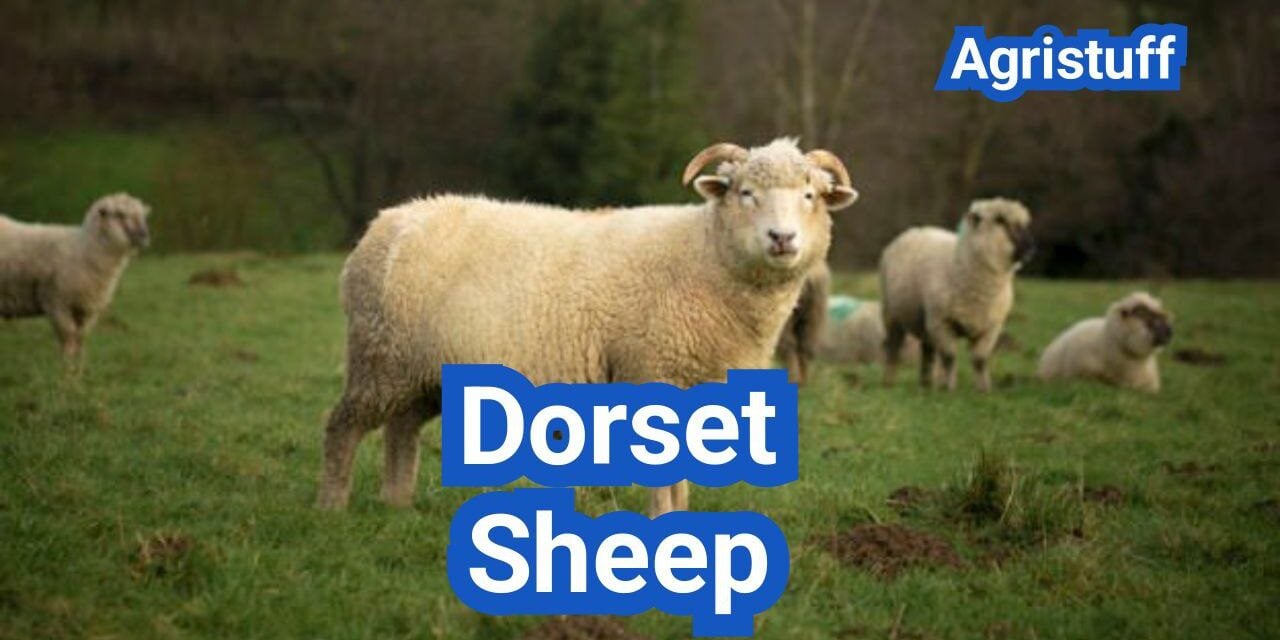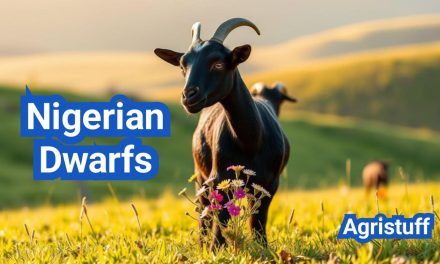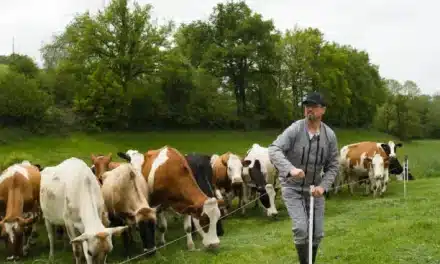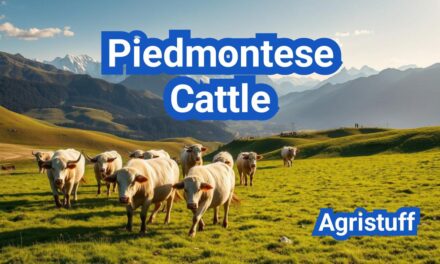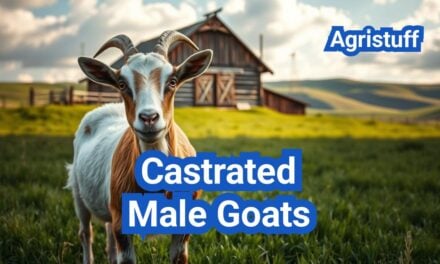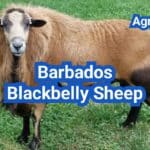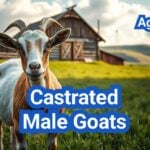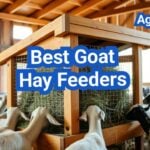The Dorset Sheep is an ancient breed known for its versatility and valuable characteristics, originating in Southwest England with a history that dates back centuries.
This breed is highly valued for its white wool and is considered an endangered breed due to its declining numbers. One of its most significant advantages is the ability to lamb throughout the year, making it an attractive choice for farmers seeking to maximize their production.
The ability to lamb year-round allows for a consistent supply of lambs for meat production, contributing to the breed’s value in the agricultural industry.
Key Takeaways
- The Dorset Sheep breed has a centuries-long history.
- It is valued for its white wool and versatility.
- The breed is considered endangered due to declining numbers.
- Dorset Sheep can lamb throughout the year.
- This characteristic makes it valuable for consistent meat production.
The Fascinating World of Dorset Sheep
The Dorset sheep breed is celebrated for its medium size, robust build, and high-quality meat production. This breed has garnered significant attention in the agricultural community due to its unique combination of physical and behavioral traits.
What Makes Dorset Sheep Special
Dorset sheep are known for their exceptional muscle mass and good body length, making them highly suitable for meat production. The breed is primarily recognized by its white coat, although variations such as black Dorsets exist. Their ability to lamb out of season is another significant advantage, allowing farmers to produce lambs throughout the year.
Economic Importance in Modern Agriculture
The economic importance of Dorset sheep in modern agriculture cannot be overstated. Their ability to produce high-quality lambs consistently has made them a valuable asset in the sheep farming industry. By providing a steady supply of lambs, Dorset sheep contribute significantly to the industry’s overall productivity and profitability.
Furthermore, the breed’s adaptability and hardiness make it an attractive choice for farmers looking to diversify their operations. As the demand for high-quality lamb continues to grow, the role of Dorset sheep in meeting this demand is likely to become even more critical.
The Rich History of Dorset Sheep

The Dorset Sheep breed has a storied past that is deeply connected to the agricultural heritage of Southwest England. The breed’s early development is closely tied to the local farming practices and the need for a sheep that could thrive in the region’s maritime climate.
Early Development in England
The history of Dorset Sheep began centuries ago, with the breed evolving to suit the local agricultural conditions. Selective breeding practices played a crucial role in shaping the breed’s characteristics, such as its hardiness and fertility.
Historical Significance in Agriculture
Dorset Sheep have been instrumental in the development of sheep farming in Southwest England. Their ability to lamb in the winter made them particularly valuable for providing a steady supply of lamb meat throughout the year.
Evolution Through the Centuries
Over time, the Dorset Sheep breed has undergone significant changes, driven by advances in agricultural practices and changing market demands. Today, the breed remains an important part of sheep farming, known for its versatility and productivity.
The evolution of the Dorset Sheep is a testament to the breed’s adaptability and the ingenuity of farmers who have selectively bred them over the centuries to enhance desirable traits.
- The breed’s hardiness and ability to thrive in various conditions.
- Their high fertility rates and ability to lamb out of season.
- The quality of their meat and wool.
These characteristics have cemented the Dorset Sheep’s place in agricultural history, making them a valuable resource for farmers around the world.
Origin and Development of the Breed
With its roots in the lush landscapes of Dorset County and surrounding areas, the Dorset Sheep breed has evolved significantly over time. The breed’s development is closely tied to the geography and climate of Southwest England, where it originated.
Geographical Origins in Dorset County
The Dorset Sheep breed originated in the counties of Dorset, Somerset, Devon, and parts of Wales. The region’s sheltered valleys and lush hill pastures provided an ideal environment for the breed to thrive. The local climate and terrain played a crucial role in shaping the characteristics of the Dorset Sheep.
Breed Development and Standardization
The development and standardization of the Dorset Sheep breed were influenced by local farming practices and the need for a hardy, prolific sheep. Breeders selectively bred the sheep to enhance desirable traits, resulting in a breed that is well adapted to various farming conditions.
Key Historical Figures in Breed Development
Several key historical figures contributed to the development of the Dorset Sheep breed. Their efforts in breeding and selecting desirable traits helped establish the breed as a distinct and valuable asset in agriculture.
| Year | Event | Significance |
|---|---|---|
| Early 1800s | Initial breed development | Establishment of foundational breed characteristics |
| Late 1800s | Breed standardization | Formalization of breed traits and characteristics |
| 20th Century | Global breed distribution | Introduction of Dorset Sheep to new regions and countries |
The Dorset Sheep breed’s history and development are a testament to the ingenuity of breeders and the adaptability of the sheep to different environments. Today, the breed remains a popular choice for farmers worldwide.
Physical Characteristics of Dorset Sheep

The physical attributes of Dorset Sheep play a crucial role in their versatility and productivity in agricultural settings. Their characteristics make them suitable for a variety of farming purposes, from meat production to wool harvesting.
Size and Weight Specifications
Dorset Sheep are of medium size, with ewes typically weighing between 150-200 pounds and rams weighing between 225-275 pounds. This size range makes them manageable for farmers while ensuring they are robust enough for breeding and production purposes.
Distinctive Physical Features
One of the breed’s most distinctive features is its white wool, known for its strength, closeness, and lack of dark fibers. This characteristic not only enhances their appearance but also contributes to the quality of their wool.
Wool Quality and Characteristics
The wool of Dorset Sheep is highly valued for its quality. It has a staple length ranging from 2.5-4 inches, which is suitable for various textile applications.
Fiber Diameter and Length
The fleece of Dorset Sheep weighs between 5-9 pounds, with a numeric count of 46’s-58’s. This indicates a good balance between fiber diameter and length, making it ideal for spinning and weaving.
Typical Yields and Grades
The typical fleece yield from Dorset Sheep is between 5-9 pounds. The wool is graded based on its quality, with factors such as fiber diameter, length, and cleanliness being considered. This grading ensures that the wool meets the required standards for different textile products.
In summary, the physical characteristics of Dorset Sheep, including their size, weight, and wool quality, make them a valuable breed for farmers and textile producers alike.
Behavioral Traits and Temperament
Understanding the behavioral traits of Dorset sheep is crucial for effective flock management and overall farm productivity. Their behavior plays a significant role in determining how easily they can be handled and managed within various farming systems.
Personality and Handling Ease
Dorset sheep are known for their docile and friendly nature, making them easy to handle and manage. This calm temperament is one of the breed’s most significant advantages, allowing farmers of all experience levels to work with them effectively. The ease of handling Dorset sheep contributes to reduced stress for both the animals and the farmers, promoting a more productive farming environment.
Social Behavior in Flocks
Dorset sheep exhibit strong social behavior within their flocks, often establishing a hierarchical structure influenced by factors such as age, size, and horn presence. This social structure is essential for maintaining order within the flock and ensuring that all members coexist peacefully.
Maternal Instincts and Lamb Bonding
Dorset ewes are particularly noted for their excellent maternal instincts and strong bonding with their lambs. This strong maternal care is crucial for the overall health and productivity of the flock, as it ensures a high survival rate among newborn lambs.
| Behavioral Trait | Description | Benefit to Farmers |
|---|---|---|
| Docile Nature | Easy to handle and manage | Reduced stress for farmers and animals |
| Social Behavior | Establishes hierarchical structure within flocks | Promotes order and peaceful coexistence |
| Maternal Instincts | Strong bonding between ewes and lambs | High survival rate among newborn lambs |
The combination of these behavioral traits makes Dorset sheep an attractive choice for many farmers, offering a balance of productivity and ease of management.
Polled vs. Horned Dorset Varieties

The Dorset Sheep breed is known for its two distinct varieties: the horned and the polled Dorset. This dual presence within the breed offers farmers a choice based on their specific needs and preferences.
Differences Between Polled and Horned Dorsets
The primary difference between the horned and polled Dorset varieties lies in the presence or absence of horns. The horned Dorset, the traditional type, is characterized by the presence of horns in both rams and ewes. In contrast, the polled Dorset lacks horns due to a genetic mutation that has been selectively bred into the variety.
Advantages of Each Variety
Each variety has its advantages. The horned Dorset offers a traditional appearance and may have advantages in certain grazing systems where horns can be beneficial. On the other hand, the polled Dorset is often preferred for its ease of handling and reduced risk of injury to both the sheep and the handlers.
- Horned Dorset Advantages:Traditional appearance
- Potential advantages in grazing systems
- Polled Dorset Advantages:Ease of handling
- Reduced risk of injury
Breeding Considerations for Each Type
When it comes to breeding, both varieties have their considerations. The choice between horned and polled Dorsets may depend on farm management practices, market preferences, and the breeder’s goals. Understanding these factors is crucial for making informed decisions.
Breeding programs should consider the genetic implications of selecting for or against the polled trait. Additionally, market demand for either variety can influence breeding decisions.
Breeding Dorset Sheep: A Step-by-Step Guide
Effective Dorset Sheep breeding involves a multi-step process that includes selecting quality breeding stock and managing the breeding process. This comprehensive approach is crucial for maximizing the productivity and profitability of a Dorset Sheep flock.
Selecting Quality Breeding Stock
Selecting the right breeding stock is the foundation of a successful Dorset Sheep breeding program. Farmers should consider factors such as genetic diversity, health, and productivity traits when choosing ewes and rams.
- Genetic diversity to avoid inbreeding
- Health status, including resistance to diseases
- Productivity traits, such as lambing rate and growth rate
Optimal Breeding Seasons and Out-of-Season Breeding
Dorset Sheep are known for their ability to lamb out of season, which allows for flexible breeding strategies. This can include accelerated lambing programs to increase productivity.
Benefits of out-of-season breeding:
- Increased lamb production throughout the year
- Better market opportunities due to less seasonal glut
- Improved flock management flexibility
Managing the Breeding Process
Managing the breeding process involves several key steps, including preparing ewes for breeding, ensuring optimal ram health and management, and maintaining accurate breeding records.
Preparing Ewes for Breeding
Ewes should be in optimal health and body condition before breeding. This includes ensuring they are up-to-date on vaccinations and have adequate nutrition.
Ram Management and Care
Rams play a critical role in the breeding program. Their health, fertility, and genetic quality directly impact the success of the breeding season.
Breeding Records and Documentation
Accurate record-keeping is essential for tracking breeding dates, lambing outcomes, and genetic lineage. This information is vital for making informed decisions in the breeding program.
| Breeding Record | Description | Importance |
|---|---|---|
| Breeding Dates | Dates when ewes are bred | Predicts lambing dates |
| Lambing Outcomes | Number of lambs born, birth weights | Assesses ewe productivity |
| Genetic Lineage | Pedigree information for ewes and rams | Helps in selecting breeding stock |
By following these steps and maintaining a focus on quality breeding stock and meticulous record-keeping, farmers can optimize their Dorset Sheep breeding programs for success.
Lambing and Newborn Care

As lambing season approaches, farmers must ensure they’re prepared for the challenges and opportunities it brings. Lambing is a critical period that requires careful planning, attention to detail, and a thorough understanding of the needs of both ewes and newborn lambs.
Preparing for Lambing Season
Preparation is key to a successful lambing season. This involves creating a clean and safe lambing environment, monitoring ewe health closely, and having the necessary supplies on hand. Farmers should also be prepared to assist with difficult births, as complications can arise unexpectedly.
Assisting with Difficult Births
While many births occur without issue, being prepared to assist with difficult deliveries is crucial. This includes having a clear understanding of the normal birthing process and knowing when intervention is necessary. Farmers should be equipped with the knowledge and tools to handle such situations effectively.
Essential Newborn Lamb Care
The care provided to newborn lambs is critical to their survival and health. Ensuring that lambs receive adequate colostrum within the first few hours of birth is vital, as it provides essential antibodies. Monitoring for signs of illness and providing appropriate care is also crucial.
First 24 Hours Critical Care
The first 24 hours are particularly important for newborn lambs. During this period, it’s essential to ensure they receive enough colostrum, are kept warm and dry, and are monitored for any signs of distress or illness.
Bottle Feeding Orphaned Lambs
In cases where lambs are orphaned, bottle feeding becomes necessary. This requires a suitable milk replacer and a feeding schedule that mimics natural feeding patterns as closely as possible. It’s also important to monitor the lamb’s health and adjust feeding as necessary.
To summarize the key aspects of lambing and newborn care, the following table outlines the essential elements:
| Aspect | Description | Importance |
|---|---|---|
| Preparation | Clean and safe lambing environment, monitoring ewe health | High |
| Assistance with Births | Knowledge of normal birthing process and intervention | High |
| Newborn Care | Adequate colostrum, monitoring for illness | Critical |
| First 24 Hours Care | Colostrum, warmth, dry conditions, health monitoring | Critical |
| Bottle Feeding | Suitable milk replacer, feeding schedule | High for orphaned lambs |
Nutritional Requirements for Healthy Dorset Sheep

To ensure optimal health, Dorset Sheep need a diet rich in essential nutrients. Providing the right nutrition is crucial for their overall well-being and productivity.
Feed Types and Quality
Dorset Sheep require high-quality feed that includes a mix of energy, protein, vitamins, and minerals. The quality of forage and concentrates is essential for maintaining their health. High-quality hay, silage, and grains are among the feed types that can meet their nutritional needs.
Seasonal Feeding Adjustments
Seasonal adjustments in feeding strategies are necessary to match the changing nutritional needs and availability of pasture. For instance, during winter months, when pasture is scarce, supplementary feeding with hay or silage becomes crucial.
Supplements and Minerals
Supplements and minerals play a vital role in ensuring that the nutritional needs of Dorset Sheep are fully met. Calcium and phosphorus are particularly important for bone health, while vitamin D is crucial for calcium absorption.
Special Needs During Pregnancy
During pregnancy, especially in the later stages, Dorset ewes have increased nutritional needs to support the developing lambs. Ensuring adequate nutrition during this period is critical for the health of both the ewe and the lambs.
Lactation Nutrition Requirements
Lactating ewes require a diet rich in energy and protein to support milk production. Adequate nutrition during lactation is essential for the growth and development of lambs.
Health Management and Disease Prevention

Maintaining the health of Dorset Sheep involves a multi-faceted approach that includes preventative measures and prompt treatment of illnesses. Effective health management is vital for ensuring the well-being and productivity of the flock.
Preventative Health Practices
Implementing preventative health practices is the first line of defense against diseases in Dorset Sheep. This includes regular monitoring of the flock’s health, maintaining a clean living environment, and providing vaccinations against common sheep diseases. By taking these proactive measures, farmers can significantly reduce the risk of disease outbreaks.
Vaccination Schedules
Developing a vaccination schedule tailored to the specific needs of your Dorset Sheep flock is crucial. Vaccinations protect against diseases such as Clostridial infections and Pasteurellosis. Consulting with a veterinarian to determine the most appropriate vaccination program for your farm is essential.
Parasite Control Strategies
Parasite control is another critical aspect of health management in Dorset Sheep. Internal parasites, such as worms, can significantly impact the health and productivity of the flock. Implementing a parasite control program that includes regular deworming and rotational grazing can help mitigate these issues.
Recognizing and Treating Common Ailments
Farmers must be vigilant in recognizing signs of illness in their Dorset Sheep, such as changes in appetite, behavior, or physical condition. Prompt diagnosis and treatment by a veterinarian are crucial for effectively managing diseases and preventing their spread within the flock.
By combining these health management strategies, Dorset Sheep farmers can ensure the health, productivity, and profitability of their flock. Regular health checks, preventative measures, and prompt treatment of illnesses are all integral components of a comprehensive health management plan.
Commercial Uses of Dorset Sheep
With their exceptional characteristics, Dorset Sheep contribute significantly to several commercial enterprises. Their versatility makes them a valuable asset in various agricultural contexts.
Meat Production and Quality
Dorset Sheep are prized for their meat production capabilities. The lambs are known for their fast growth rates and high-quality meat, making them a sought-after choice for farmers looking to produce premium lamb products.
- Fast growth rates
- High-quality meat
- Premium lamb products
Wool Harvesting and Processing
In addition to meat production, Dorset Sheep are also used for wool harvesting. Their fleece is valued for its quality and characteristics, making it suitable for various textile applications.
Key benefits of Dorset wool include:
- High-quality fleece
- Valuable textile material
- Versatile applications
Dairy Production from Dorset Ewes
Some farmers utilize Dorset ewes for dairy production, leveraging their milk for cheese and other dairy products. This additional revenue stream can enhance the overall profitability of a sheep farming operation.
Crossbreeding for Commercial Advantages
Crossbreeding Dorset Sheep with other breeds can offer several commercial advantages, including improved growth rates and hardiness. This practice allows farmers to tailor their flock’s characteristics to specific market demands.
By leveraging the strengths of Dorset Sheep in various commercial applications, farmers can optimize their operations for maximum profitability and sustainability.
Showing and Exhibiting Dorset Sheep

Dorset Sheep are renowned for their exceptional qualities, making them a popular choice for exhibitions and shows. Their distinctive characteristics and versatility make them a favorite among breeders and exhibitors alike.
Preparation for Shows and Fairs
Preparing Dorset Sheep for shows and fairs involves thorough training and handling to ensure they are comfortable and well-behaved in the show ring. Early training is crucial for developing the sheep’s confidence and responsiveness to commands.
Grooming and Presentation Techniques
Grooming is a critical aspect of showing Dorset Sheep. Regular grooming sessions help to maintain the sheep’s coat and overall appearance. Techniques include brushing, trimming, and ensuring the sheep are clean and well-presented.
Understanding Judging Criteria
Understanding the judging criteria is essential for success in sheep shows. Judges typically evaluate the sheep based on conformation, fleece quality, and overall health. Familiarity with the breed standard is vital for exhibitors to present their sheep effectively.
Youth Programs and Opportunities
Youth programs related to sheep showing provide valuable educational experiences, teaching young breeders about animal husbandry, showmanship, and the Dorset Sheep breed. These programs promote the breed and encourage the next generation of breeders.
By focusing on preparation, grooming, and understanding judging criteria, exhibitors can showcase their Dorset Sheep effectively and achieve success in sheep exhibitions.
Dorset Sheep in the United States

The introduction of Dorset Sheep to the United States marked a significant milestone in the breed’s global expansion. Since their arrival in the mid-19th century, Dorset Sheep have become a staple in American sheep farming.
Introduction and Spread Across America
Dorset Sheep were first introduced to the U.S. in the 1800s, and their popularity grew steadily as they adapted to various regional conditions across the country. Their ability to thrive in different environments contributed to their widespread adoption.
Current Population and Distribution
Today, Dorset Sheep can be found throughout the United States, with significant populations in major farming regions. The breed’s versatility has made it a favorite among farmers across different states.
Major Dorset Farming Regions
Some of the major regions for Dorset Sheep farming in the U.S. include the Midwest and parts of the East Coast, where farmers appreciate the breed’s hardiness and productivity. These regions provide ideal conditions for the breed to flourish.
American Dorset Sheep Association
The American Dorset Sheep Association plays a crucial role in promoting the breed and providing resources for breeders. The association is responsible for maintaining breed standards and supporting the ongoing development of Dorset Sheep in the United States.
The presence of Dorset Sheep in the U.S. continues to grow, driven by their economic viability and the efforts of the American Dorset Sheep Association. As the breed continues to adapt to changing agricultural practices, it remains a vital part of American sheep farming.
Sustainable Farming with Dorset Sheep
The integration of Dorset Sheep into farming operations can significantly enhance sustainability through improved land management. This breed is particularly well-suited for sustainable farming practices due to its hardiness and versatility.
Rotational Grazing Practices
Rotational grazing is a key strategy in maintaining pasture health and biodiversity. By moving Dorset Sheep to different grazing areas, farmers can prevent overgrazing, improve soil fertility, and reduce erosion. This practice also allows for more efficient use of pasture resources.
Organic Dorset Sheep Production
Organic production methods can be applied to Dorset Sheep farming, further enhancing its sustainability. Organic farming avoids the use of synthetic fertilizers and pesticides, promoting a healthier ecosystem. This approach can also lead to premium prices for organic lamb and wool products.
Environmental Benefits of Sheep Farming
Sheep farming with Dorset Sheep offers several environmental benefits, including biodiversity conservation and reduced carbon footprint. By maintaining open spaces and promoting ecological balance, Dorset Sheep farming contributes to a healthier environment.
Reducing Carbon Footprint in Operations
Dorset Sheep farming can help reduce the carbon footprint of agricultural operations. Practices such as rotational grazing and maintaining soil health through appropriate grazing management can sequester carbon in soils.
| Practice | Environmental Benefit |
|---|---|
| Rotational Grazing | Improved soil health and biodiversity |
| Organic Production | Reduced chemical use and healthier ecosystem |
| Soil Conservation | Reduced erosion and improved fertility |
By adopting sustainable farming practices with Dorset Sheep, farmers can not only improve the environmental sustainability of their operations but also potentially increase their profitability through premium products and improved land management.
Economic Considerations for Dorset Sheep Farmers
Economic factors play a vital role in the success of Dorset Sheep farming operations. Understanding these factors is crucial for farmers to make informed decisions and ensure the profitability of their ventures.
Initial Investment Requirements
Starting a Dorset Sheep farm requires a significant initial investment. This includes costs associated with land preparation, fencing, housing, and acquiring high-quality breeding stock. The cost of land preparation can vary depending on the existing infrastructure and the condition of the land. Fencing is essential to protect the sheep from predators and prevent them from escaping. Housing facilities should provide adequate shelter and protection from the elements.
Ongoing Operational Costs
Ongoing operational costs for Dorset Sheep farming include feed, veterinary care, and marketing expenses. Providing high-quality feed is essential for the health and productivity of the sheep. Veterinary care is crucial for maintaining the health of the flock and preventing disease outbreaks. Marketing expenses are necessary for promoting the sale of lambs, wool, and dairy products.
Potential Revenue Streams
Dorset Sheep farmers can generate revenue through various channels, including the sale of lambs, wool, and dairy products. The sale of lambs is a significant revenue stream, particularly if the lambs are of high quality and in demand. Wool production can also be a lucrative venture, especially if the wool is of high quality and commands a good price in the market. Dairy products, such as cheese and milk, can provide an additional source of income.
Marketing Strategies for Dorset Products
Effective marketing strategies are essential for maximizing profitability in Dorset Sheep farming. Farmers can use various marketing channels, including online platforms, farmers’ markets, and local agricultural events, to promote their products. Building a strong brand identity and highlighting the unique qualities of their products can help farmers differentiate themselves from competitors and attract customers.
The Future of Dorset Sheep Farming
The future of Dorset Sheep farming appears bright, driven by the breed’s versatility and productivity. As the agricultural sector continues to evolve, the Dorset Sheep breed is well-positioned to adapt, contributing to sustainable farming practices and the production of high-quality products.
Ongoing efforts to promote the Dorset Sheep breed and improve its characteristics will be crucial for its long-term success. The breed’s ability to thrive in various environments and its value in meat, wool, and dairy production make it a valuable component of the sheep farming industry.
As farmers and breeders continue to innovate and adopt best practices, the Dorset Sheep breed is poised to remain a significant player in the industry. Its continued relevance will depend on the commitment to enhancing its qualities and promoting its uses.
FAQ
What is the origin of the Dorset Sheep breed?
The Dorset Sheep breed originated in the southwestern part of England, specifically in Dorset County and surrounding areas such as Somerset, Devon, and parts of Wales.
What are the distinctive physical characteristics of Dorset Sheep?
Dorset Sheep are known for their medium size, robust build, and white wool. Ewes typically weigh between 150-200 pounds, while rams weigh between 225-275 pounds.
What are the advantages of the Dorset Sheep breed’s ability to lamb out of season?
The breed’s ability to lamb throughout the year allows for a consistent supply of lambs for meat production, making it an attractive choice for farmers seeking to maximize their production.
What are the differences between polled and horned Dorset Sheep?
The horned Dorset is the traditional type, characterized by the presence of horns in both sexes, while the polled Dorset lacks horns due to a genetic mutation that was selectively bred.
How do I select quality breeding stock for my Dorset Sheep flock?
Selecting high-quality breeding stock involves considering factors such as genetic diversity, health, and productivity traits.
What are the nutritional requirements for healthy Dorset Sheep?
Dorset Sheep require a balanced diet that meets their energy, protein, vitamin, and mineral needs, with high-quality forage and concentrates being essential.
How can I manage the health of my Dorset Sheep flock?
Effective health management involves implementing preventative health practices, such as regular vaccinations and parasite control strategies, and monitoring for signs of illness.
What are the commercial uses of Dorset Sheep?
Dorset Sheep are utilized in various commercial contexts, including meat production, wool harvesting, and dairy production, with crossbreeding offering additional commercial advantages.
How can I participate in showing and exhibiting Dorset Sheep?
Preparation is key, involving thorough grooming and presentation techniques to highlight the breed’s best characteristics, and understanding the judging criteria.
What is the current status of Dorset Sheep in the United States?
Dorset Sheep are found throughout the United States, with significant populations in major farming regions, and the American Dorset Sheep Association plays a crucial role in promoting the breed.
How can Dorset Sheep farming contribute to sustainable agricultural practices?
Integrating Dorset Sheep into farming systems can contribute to sustainable practices, such as rotational grazing, organic production, and reducing carbon footprint.
What are the economic considerations for establishing a Dorset Sheep farm?
Establishing a Dorset Sheep farm involves initial investment requirements, ongoing operational costs, and potential revenue streams, with effective marketing strategies being crucial for maximizing profitability.
Are Dorset Sheep considered an endangered breed?
Yes, the Dorset Sheep breed is considered endangered due to its declining numbers.
What is the typical fleece yield of Dorset Sheep?
The typical fleece yield is between 5-9 pounds, with a numeric count of 46’s-58’s, indicating its suitability for various textile applications.
Conclusion of: Dorset Sheep Breed
Introduction to dorset sheep and their role in U.S. flocks
Dorset sheep are a well-known white-faced breed in the United States, valued for dependable lamb crops, strong mothering, and the unusual ability to breed outside the typical fall season. Many U.S. producers keep dorset sheep as a purebred ewe base, while others use dorset sheep rams in crossbreeding programs to add muscle and early growth in market lambs. Because dorset sheep work in both commercial and small-farm systems, they remain a practical breed for anyone aiming for consistent lamb supply and solid carcass quality. Continental Dorset Club
History and development of dorset sheep
Dorset sheep originated in Dorset County in southern England, where farmers selected them for fertility, thriftiness, and performance on grass. Horned Dorset sheep arrived in North America in the 1800s and were the original form of dorset sheep in the U.S. A naturally polled mutation later became popular, leading to modern Polled Dorset sheep that dominate American registries due to easier handling and reduced risk of horn injuries. Today, both Polled Dorset sheep and Dorset Horn sheep exist, but most U.S. commercial operations favor polled lines. The Livestock Conservancy
Key physical traits that define dorset sheep
Good dorset sheep are medium-to-large framed with a clean white face, open nostrils, and a broad, deep body that supports high lamb growth. Dorset sheep typically have strong legs and sound feet, a major advantage in pasture systems. Their fleece is medium-fine and fairly dense, but most farmers choose dorset sheep for meat and maternal performance rather than wool returns. In U.S. conditions, mature dorset sheep ewes often weigh about 150–200 lb and rams around 225–275 lb depending on line and management. Oklahoma State University Dorset Profile
Temperament and handling of dorset sheep
Dorset sheep are generally calm and easy to manage, which matters in lambing barns and small homesteads where close handling is routine. Compared with more flighty breeds, dorset sheep adapt well to frequent human contact, tagging, and weighing. A steady temperament also supports better lamb survival, because dorset sheep ewes are less likely to abandon lambs after mild disturbances. Good facilities and low-stress handling still matter, but dorset sheep are widely considered producer-friendly. Penn State Extension on Low-Stress Handling
What “meat vs. milk lines” means in dorset sheep
When breeders talk about meat versus milk lines, they are describing selection priorities within dorset sheep. A “meat” or terminal line focuses on muscling, feed conversion, and carcass value, while a “milk” or maternal line focuses on reproduction, udder quality, milk yield, and lamb-rearing efficiency. Dorset sheep are naturally dual-purpose, so most flocks sit on a spectrum rather than at one extreme. The right dorset sheep line depends on whether you want fast-finishing market lambs, long-lasting maternal ewes, or a balanced combination. Sheep101 Breed Purposes
Meat-focused dorset sheep lines and carcass advantages
Terminal or meat-focused dorset sheep lines are selected for wide loins, thick hindquarters, and high lean yield, producing lambs that meet U.S. market preferences for a “blocky,” well-finished carcass. Dorset sheep rams from these lines are often used on crossbred ewes, because their lambs grow rapidly and finish efficiently on pasture plus grain. Producers who sell to ethnic holiday markets especially like terminal dorset sheep because they create a uniform crop with predictable weights and strong dressing percentages. American Sheep Industry Association Production Resources
Maternal (milk-strong) dorset sheep lines for replacement ewes
Maternal dorset sheep lines emphasize ewes that cycle easily, lamb without trouble, produce ample milk, and remain productive for many years. In a self-replacing flock, these dorset sheep traits drive profit because they reduce labor, lower lamb losses, and increase weaning weights. Many U.S. breeders now use performance recording systems to identify dorset sheep families that consistently raise heavy twins, since maternal value is more visible in records than in appearance alone. National Sheep Improvement Program (NSIP)
Fertility and out-of-season breeding in dorset sheep
One of the biggest reasons dorset sheep are popular in the U.S. is their ability to breed out of season. While many breeds are seasonal and cycle mainly in fall, dorset sheep often show fertile heats in spring and early summer too. This allows producers to schedule lambing for high-price windows, run accelerated lambing systems, or simply have flexibility if markets change. Dorset sheep commonly deliver twins, and triplets are not rare in well-managed flocks with good nutrition. Penn State Extension on Off-Season Lambing
Planning a fall lambing system with dorset sheep
Fall lambing is a classic fit for dorset sheep because it targets strong spring and early-summer lamb demand. A simple model is to breed dorset sheep ewes in May or early June for October–November lambs, then use a cleanup ram later if you want a second group. Success depends on body condition scoring, flushing ewes before breeding, and controlling parasites through summer so dorset sheep enter lambing strong and healthy. With good planning, fall-born dorset sheep lambs can be marketed before peak summer heat. OSU Extension on Fall Lambing
Lambing traits and mothering behavior of dorset sheep
Dorset sheep are known for easy lambing and attentive mothering, which is important in both pasture lambing and barn systems. Most dorset sheep ewes have a wide pelvic structure and good uterine tone, helping reduce dystocia. Still, management matters: clean lambing jugs, quick navel dipping, and making sure each dorset sheep lamb nurses within the first hour can significantly improve survival. Because twins are common in dorset sheep, keeping colostrum reserves on hand is a smart insurance policy. Penn State Extension Preparing for Lambing
Typical birth weights and early growth of dorset sheep lambs
Dorset sheep lambs are usually born vigorous, with average birth weights around 9–11 lb depending on litter size and ewe nutrition. Their early growth is strongly supported by dorset sheep milk production, and well-managed lambs can gain roughly 0.4–0.6 lb per day during the nursing phase. This strong start is one reason dorset sheep are reliable for producers who need lambs to reach target weights on schedule. University of Minnesota Extension on Lamb Growth
Weaning weights, finishing age, and overall growth rates in dorset sheep
Under good conditions, dorset sheep lambs often reach about 70–90 lb by 90–120 days, then continue gaining efficiently after weaning. In many U.S. systems, dorset sheep lambs are finished for slaughter at 5–6 months, depending on feed quality and market goals. Faster terminal lines can finish earlier, while pasture-only programs may finish a bit later. The key point is that dorset sheep genetics allow flexible marketing because growth stays steady if nutrition and health are well managed. USDA-ARS Sheep Research
Feeding dorset sheep ewes for milk and reproduction
To keep dorset sheep fertile and milky, nutrition should match production stage. Ewes need enough energy and protein before breeding (flushing) to boost ovulation, then a controlled but adequate diet in early pregnancy to avoid over-conditioning. In late gestation and early lactation, dorset sheep requirements climb sharply, especially for twins, so high-quality hay plus grain or a balanced concentrate helps maintain milk flow and ewe health. Minerals—especially selenium, iodine, and calcium—are also critical for dorset sheep reproductive success. Penn State Extension Sheep Nutrition
Creep feeding and post-weaning rations for dorset sheep lambs
Many producers creep feed dorset sheep lambs from 1–2 weeks of age to maximize growth and reduce weaning stress. A palatable creep diet around 18–20% protein with highly digestible energy supports rapid rumen development and helps dorset sheep lambs maintain gains when milk supply naturally tapers. After weaning, good pasture plus a grower ration keeps dorset sheep lambs on track for target slaughter weights. Penn State Extension on Creep Feeding
Health priorities: parasites, feet, and vaccines for dorset sheep
Dorset sheep are hardy, but their performance drops quickly if parasites and foot issues are ignored. Rotational grazing, avoiding overstocking, and using fecal egg counts or FAMACHA scoring support targeted deworming in dorset sheep without driving resistance. Regular hoof trimming and fast treatment of footrot keep dorset sheep sound and productive. Core vaccines such as CD&T and region-specific protocols should be timed around lambing for best protection of dorset sheep lambs. ATTRA Parasite Management
Genetics, EPDs, and selecting better dorset sheep
Modern dorset sheep breeders increasingly use Estimated Breeding Values (EBVs/EPDs) to improve growth, carcass traits, and maternal performance. Choosing dorset sheep rams with strong NSIP data is one of the fastest ways to lift weaning weights and flock efficiency because rams contribute genetics to many lambs each season. For replacement ewes, selecting dorset sheep from proven maternal families improves milk, fertility, and longevity over time. NDSU Extension on NSIP
Crossbreeding systems that use dorset sheep
Dorset sheep work well in crossbreeding because they add fertility and carcass shape while keeping lambs moderate enough to finish efficiently. A common U.S. model uses dorset sheep rams on Rambouillet or other range-type ewes to produce market lambs with better muscling and faster growth, or uses dorset sheep ewes with terminal sires for a three-breed system. With good records, producers can match dorset sheep genetics to local forage, climate, and market timing. Utah State Extension on Sheep Crossbreeding
Where dorset sheep fit best across U.S. climates
Dorset sheep perform well in a wide range of American environments, from humid Midwest pastures to cooler Northern systems, as long as forage quality and parasite control are handled correctly. They are especially useful where producers want reliable twin crops and the option for fall lambing. When choosing dorset sheep for your farm, prioritize sound feet, correct udders, and flock records showing durable productivity, not just show-ring style. University of Missouri Extension on Choosing Breeding Sheep
Final thought
Dorset sheep remain a top choice in the United States because they combine real-world traits that pay the bills: flexible breeding, strong mothering, and lambs that grow into desirable carcasses. If your goal is a steady stream of market lambs, a self-replacing ewe flock, or both, dorset sheep can fit the plan as long as line selection matches your system. Invest in good genetics, keep nutrition and parasite control tight, and dorset sheep will reward you with dependable performance year after year. American Sheep Industry Association
Sources & References
- Raisingsheep.net/dorset-sheep
- Continental Dorset Club (U.S. breed association)
- Oklahoma State University – Dorset Sheep profile
- The Livestock Conservancy – Dorset Horn history
- Penn State Extension – Off-season lambing
- OSU Extension – Fall lambing program
- Penn State Extension – Lambing preparation
- National Sheep Improvement Program (NSIP)

